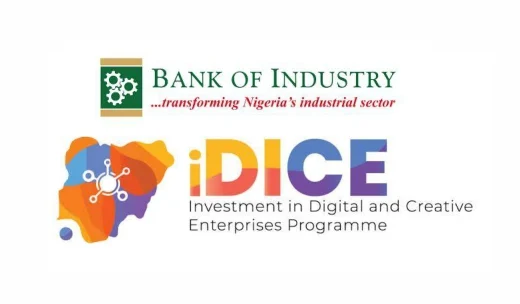How To Drive AI Adoption Among Marketers
If you were to go back in time a few years, Elon Musk had a sterling personal brand. He was an innovator, a genius who brought new ideas to solve the world’s problems. Someone who worked for his success and wanted to make a difference in the world. A crusader for renewable energy, the technological revolution and space exploration.
Today, that brand has taken a massive beating. Musk is still the world’s richest person, but his latest job—as President Donald Trump’s chief wrecking ball in efforts to reduce government spending—has dramatically changed the way people look at him. His personal net worth has gone down nearly $43 billion since January alone, reports Forbes’ Derek Saul, while Tesla’s stock—the largest component of his personal wealth—has been steadily declining.
In the last six months, Musk has had a supersized injection into politics: spending more than $200 million to get Trump elected and seemingly rarely leaving the president’s side, using a metaphorical chainsaw to quickly gut government agencies (and accusing many employees of fraud along the way), pushing his way into secure systems that contain sensitive personal information, using unvetted young employees with questionable opinions to go through this data, and making gestures compared to a Nazi salute, to name a few recent events. Musk has been the target of protests and anger at the Trump Administration’s bold moves. Tesla stores both in the U.S. and Europe have been vandalized, writes Forbes’ Alan Ohnsman. Two-thirds of prospective new car buyers said in a recent survey they definitely would not consider a Tesla as their next vehicle, up from 48% in 2023. Saul reported that Tesla’s net favorability is currently at an all-time low of 3%, according to a monthly survey conducted by Stifel and Morning Consult.
As the world’s richest person, Musk perhaps isn’t feeling the financial fallout from his personal branding crash. However, the likelihood that he’ll be seen as just a visionary businessman ever again is waning. He’s become more and more of a polarizing figure in world politics, a brash and irreverent conspiracy theorist. Someone with a lot of money to throw around, but who isn’t necessarily using it to invest in a better, science-enabled future.
AI tools can revolutionize your business, but you actually have to use them. I talked to Juniper Networks CMO Jean English about how she got her whole team onboard with using AI every day, and getting results. An excerpt from our conversation is later in this newsletter.
The Philadelphia Eagles celebrate with the Vince Lombardi Trophy after beating the Kansas City Chiefs in Super Bowl LIX.
Chris Graythen/Getty ImagesMany things have changed about America’s viewing habits in recent years, but the vast draw of the Super Bowl remains constant. Sunday’s Big Game, in which the Philadelphia Eagles routed the Kansas City Chiefs, broke viewership records with 127.7 million viewers, Fox reported. The game itself—as well as Kendrick Lamar’s halftime performance—saw 3% more viewers than last year. Those numbers represent both linear television viewers and those who watched on free streaming platform Tubi, which generated 13.6 million viewers.
Several of those viewers tuned in for the ads, which featured a wide array of celebrities, heartwarming messages, cheeky humor and shrug-inducing ideas that likely sounded a lot better as boardroom pitches. USA Today’s Ad Meter poll found that viewers’ favorite was Budweiser’s “First Delivery” commercial featuring a Clydesdale foal, writes Forbes senior contributor Pamela Danziger. Other favorites included the Lay’s spot featuring a little girl who grows her own potato plant to contribute to the chipmaker, and Michelob Ultra’s commercial featuring Catherine O’Hara and Willem Dafoe as pickleball sharks who shut down all opponents to win more Ultras. Near the bottom was the dancing tongue spot advertising Coffee-Mate’s Cold Foam creamer.
A logo at the Fox News headquarters in New York.
Erik McGregor/LightRocket via Getty ImagesFox is broadening its reach into conservative media and audiences. The company announced its acquisition of Red Seat Ventures, a platform providing conservative podcasters technology, marketing and support, writes Forbes senior contributor David Bloom. The company has been the go-to platform for conservative media stars expanding to podcasts, including Megyn Kelly, Tucker Carlson and Piers Morgan. The acquisition fits in with a strategy CEO Lachlan Murdoch shared on last week’s earnings call, moving Fox more toward the new media landscape and broadening from traditional broadcast. Murdoch said last week the company also plans to launch a direct-to-consumer subscription streaming service.
More directly in the center of today’s conservative politics, Fox announced last week that Lara Trump, the president’s daughter-in-law, will be hosting her own weekend show on the network starting February 22. My View with Lara Trump will be the first television show on a major news network hosted by a close relative of a sitting president. The new show adds to the Trump Administration’s close connection with Fox; at least 19 people formerly affiliated with the network have been chosen for senior positions in the current Trump Administration.
getty
A sign to cement AI’s prowess in the art world: Christie’s is hosting an auction made entirely of art created with the help of AI, writes Forbes senior contributor Leslie Katz. The show, “Augmented Intelligence,” will feature more than 20 works ranging from digital art, sculptures, paintings and ink on paper. And while everybody who bids on these works of art will know that they were the product of AI, the auction is still controversial. More than 5,000 people have signed an open letter to Christie’s asking for the auction to be canceled. Many of the works come from AI models that were trained on other works of art without permission or compensation for the original artists. “Your support of these models, and the people who use them, rewards and further incentivizes AI companies’ mass theft of human artists’ work,” the letter states.
The copyright fight against AI companies has gained some traction. This week, Thomson Reuters won a lawsuit against legal AI startup Ross Intelligence, which it filed in 2020, claiming the AI firm reproduced items from its Westlaw legal research firm. U.S. Circuit Court Judge Stephanos Bibas ruled that training the AI system on Westlaw did not constitute permissible fair use. Cornell University professor of digital and internet law James Grimmelmann told Wired, “If this decision is followed elsewhere, it’s really bad for the generative AI companies.”
Juniper Networks CMO Jean English.
Juniper NetworksAI tools can do a lot for your business, but they’re worthless if they aren’t being used. Juniper Networks CMO Jean English has been able to get her team of more than 280 marketers to use AI tools every day, and they’ve increased ROI by five times. I talked to her about how she drove adoption. This conversation has been edited for length, clarity and continuity.
When you started down the AI transformation path, what was the first thing that you did in order to find something that your team would use?
English: Any leader, if you want your team to embrace something new, you have to be willing to do it yourself. Very early, when ChatGPT was launched, I started using it for a nonprofit board that I was on to help them to do fundraising. It helped me to build out campaigns and to do social media posts and to help to build out campaign ideas, and then to create content. That content could have been newsletters, posts or emails that went out to their fundraising base and to their donors. I think the best thing you can do as a leader is stay curious.
When I joined Juniper, we were evaluating tools. [An] intern showcased the ability to take this AI tool, and with the right creative brief and the right prompts and making sure to understand what you’re trying to write for, could create a webcast, a promotion to the webcast, an abstract of the webcast, a thinking note for the webcast. We went back to the original writer and said, ‘How long did it take you to do this? We just used an AI tool. Is this close to [the] outcome you would’ve wanted?’ The writer made some changes, and very quickly was able to turn that around.
When the intern showed this to me, I was like, ‘You’re hired, because this is exactly what we need to be thinking about.’ I don’t want every single person on my team to [have to] create the templates and the prompts to be able to do what we need to do. I want more people to be focused on our customers, their needs, and the use cases of how they can use our technology to better their lives and any user experience in the network.
How do we do that at scale? You have to be able to understand a lot of different customers, technologies, use cases. You have to think about different industries, geographies. Trying to do that with the current team became really difficult. We started doing training. We gave every single person in our organization access, so they got a license to the tool, then we started training them on different use cases of how the team could start to adopt AI.
There can be training, but people sometimes go back to the way of doing things they're used to. What did you do to make sure they used the AI?
We went through and looked at every single team. Everyone has different use cases. A PR team is looking at how [to] use this to write stronger press releases. Then we started to map out how many press releases have we been able to get out, and are we driving more press releases than we did before?
We started to look at product launches. If we were driving into the pace of the business, you could take a bunch of launches, put them all together and drive something that’s more thematic for a quarter, or make sure that you’re having a continuous product launch view. That allowed for us to get more content and more launches out in a market in a more timely basis. We saw an increase in our launches. That maps to the business objectives of being able to have continuous innovation, the ability for us to create content.
We created squads so that inside of our teams, we had people around product marketing, and campaign strategy, campaign architects, content and analytics and web strategy. They all mapped to different areas of our business, and we wanted them to be able to get content and campaigns out at scale.
We started measuring how many campaigns and contexts can we get out in the year, and what does that look like as we drive demand. We had a very lofty goal for our demand generation: To be able to do 5x of what we did from the beginning of the year to the end of the year. We had business metrics. The AI tool was a way to be able to deliver on those metrics. I didn’t try to put a very specific metric on the tool itself, even though we are measuring the impact and the results. We did have a lofty goal that we wanted to reach, and that became a way to achieve it.
Juniper Networks is in the tech space, so presumably people who work with you have some interest in technology. How can you get marketers who work in other industries as excited about AI as your team has been?
AI is built from the ground up in our products, so the acceptance of technology and using technology is very high, even as marketers inside of tech. When I look at other industries, I think technology is shaping industries that are beyond just technology itself. I think that every company in some way is using software, is using some type of automation, is thinking about how they use the insights and advantages of technology to drive differentiation into the market.
[When I started my career,] I was one of the first people at my company to try email marketing. I remember going to our web manager and saying, ‘I want to buy this piece of software. I can customize it to send certain people a customized email based on their location and relevance.’ Once I was able to implement it, I took it to the leader of our team. I started to share it with my peers and everyone was like, ‘Wow, how did you drive those results? Because I want to do that too.’
Finding the fast adopters of technology can be a spark within our organization. I think you have to learn how to reward them. You have to learn how to share that practice. You have to be able to share results, and you want to make an incentive for people to drive business outcomes. In turn, you want to be able to recognize people that are a little bit of wild ducks and decide to take a different path. You have to test and figure it out, and if it fails, figure out what failed, and then get right back on and test and drive the results you want.
Streaming is a difficult business to profit from. Forbes senior contributor Caroline Reid looked at Disney’s streaming losses and compared them with other losses the company has seen.
$10.7 billion: Total operating losses to date on Disney’s streaming services
$4.06 billion: Total losses at Disneyland Paris since it opened in 1992. The park is widely seen as one of Disney’s biggest flops
‘The risk would have been essentially maintaining a status quo approach’: How CEO Bob Iger responded to a 2019 question about the risks of streaming in the Hollywood Reporter
Marketers are always interested in new growth tactics. These six books can teach you new ways to be effective.
LinkedIn isn’t just a place for professional networking. It’s also a place to find new clients. Here are some ways to build a relationship with people who comment on your posts.
QUIZ
Before it was shut down this week, Kanye West’s online Yeezy store sold a single product. What was it?
A. Broken vinyl copies of his 2007 “Graduation” album
B. Sheer dresses
C. Swastika T-shirts
D. Copies of Mein Kampf
See if you got the answer right here.











